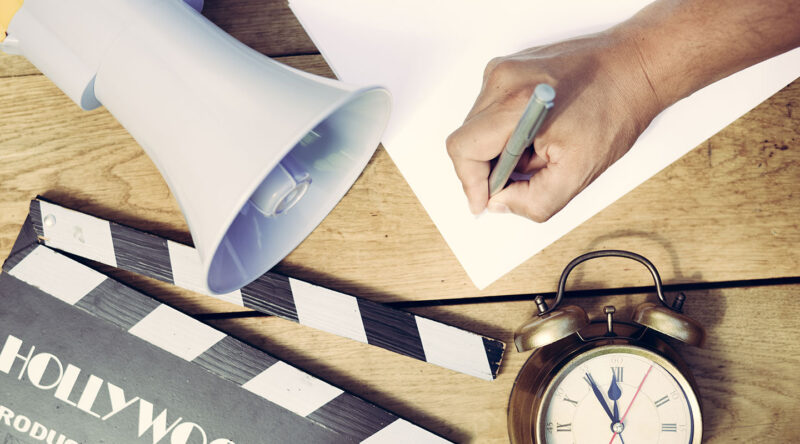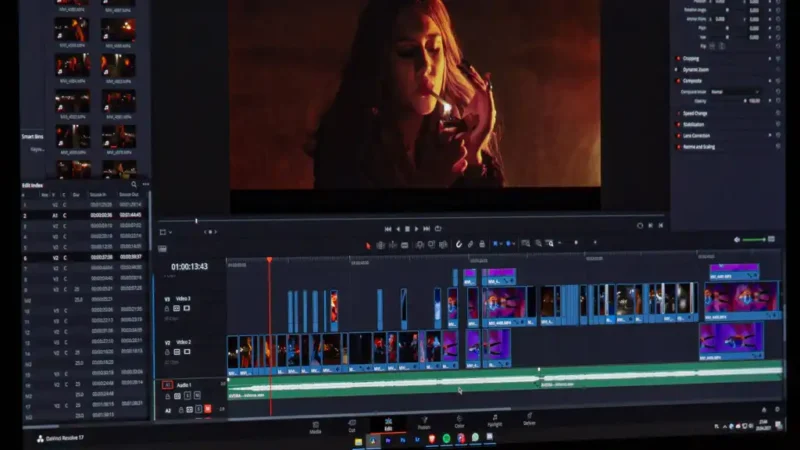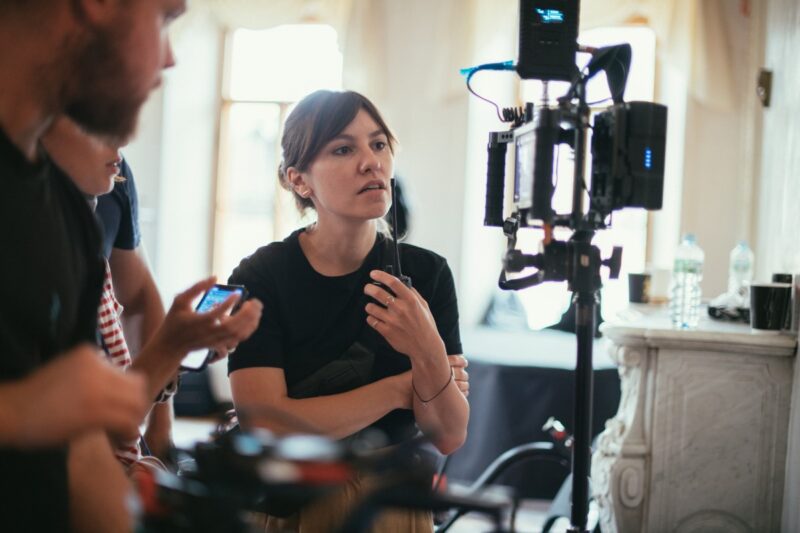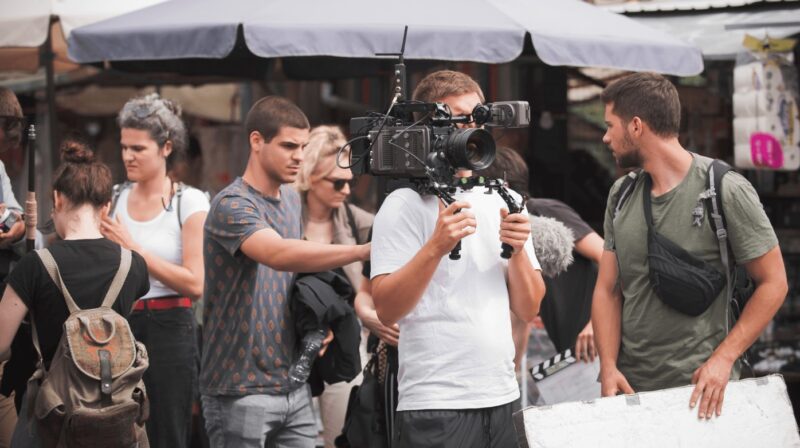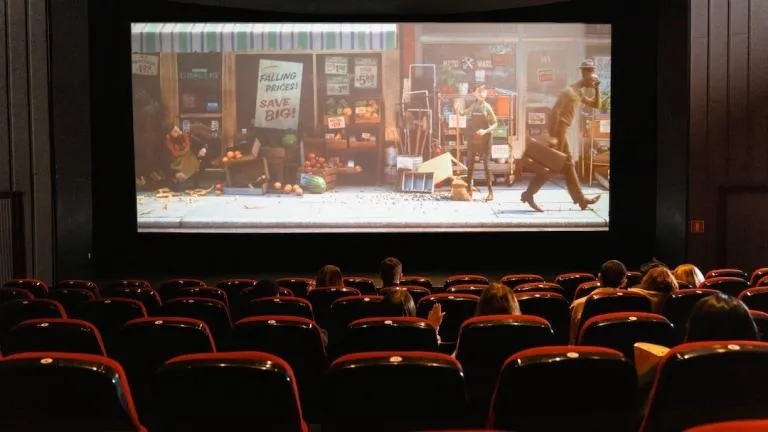Lighting can make or break your film. It sets the mood, highlights the characters, and brings your story to life. As an indie filmmaker, you might think that achieving professional-quality lighting requires expensive equipment. But, with a bit of creativity and resourcefulness, you can light your scenes beautifully without breaking the bank.
I’ve been where you are—working with tight budgets, limited resources, and a passionate drive to create something amazing. That’s why I’ll share some of the most effective and budget-friendly lighting hacks I’ve learned through my own filmmaking journey.
What is three-point lighting?
Before diving into DIY hacks, it’s crucial to understand the basics of lighting. Three-point lighting is a standard method used in visual media. It involves three main sources:
1. Key light
This is the primary source. It should be the brightest and placed at a 45-degree angle from the camera. The key light is responsible for defining the subject’s form and features, creating the main shadows and highlights. In most setups, it is positioned slightly above eye level to create a natural and flattering look. Using a strong key light will help you establish the dominant mood and tone of your scene.
2. Fill light
This light softens shadows created by the key light. Position it opposite the key light and dimmer in intensity. It reduces the contrast between light and shadow, making the overall lighting more balanced and natural. It can be adjusted to achieve the desired level of shadow detail, ensuring that the subject’s features are not lost in darkness.
3. Backlight
Also known as rim or hair light, this source separates the subject from the background, adding depth. The backlight is placed behind the subject, often at a higher angle, to create a subtle outline or halo effect. This helps to distinguish the subject from the background, preventing them from blending into it.
By adding depth and dimension, the backlight enhances the three-dimensionality of your scene, making it more visually appealing.
The importance of color temperature
Lighting sources have different color temperatures, measured in Kelvin (K). Standard indoor lighting is about 3200K (warm/yellow), while daylight is around 5600K (cool/blue). Mixing these temperatures can create an unnatural look, so try to match the color temperature of your lights.
DIY hacks
Aluminum foil and baking paper
Aluminum foil is excellent for reflecting light while baking paper acts as a diffuser to soften harsh light. These simple household items can be transformed into effective tools with minimal effort and cost.
Reflector
Crumple aluminum foil and attach it to a sturdy piece of cardboard. Use this to reflect light onto your subject. The crumpled texture helps scatter the light, creating a more even and natural reflection. You can adjust the angle and distance of the reflector to control the intensity and direction of the reflected light. Reflectors are particularly useful for filling in shadows and adding highlights.
Diffuser
Place baking paper over a light source to diffuse and soften it. This works well for harsh overhead lighting. The baking paper spreads the light, reducing harsh shadows and creating a more flattering illumination.
You can experiment with multiple layers of baking paper to achieve the desired level of diffusion. Diffusers are essential for creating soft, even lighting that enhances the subject’s appearance.
Clamp Lights
Clamp lights are inexpensive and versatile. You can attach them to almost any surface and direct the light where you need it. These lights are commonly available at hardware stores and are easy to set up and adjust.
Tip: Use multiple clamp lights to mimic three-point lighting. Adjust the brightness with dimmable bulbs or use baking paper to diffuse the light. Clamp lights can be positioned at various angles to achieve the desired lighting effect.
Using natural light
Windows are an excellent source of soft, natural light. Utilizing window light can save you money on lighting equipment while providing beautiful illumination. Place your subject near a window for soft, even lighting. Use sheer curtains to diffuse direct sunlight.
The natural light from windows is typically soft and flattering, making it ideal for portraits and close-up shots. Sheer curtains can help control the intensity of the light and reduce harsh shadows. Experiment with different times of the day to see how the changing light affects your scene.
Golden Hour: Shoot during the golden hour—shortly after sunrise or before sunset—for warm, flattering light. The golden hour provides a unique quality of light that is soft, warm, and diffused. This time of day is perfect for creating a magical and cinematic look in your scenes. Plan your shoots to take advantage of this natural lighting phenomenon for the best results.
Affordable light modifiers
DIY Softbox
A softbox diffuses light, reducing harsh shadows. You can create a DIY softbox with basic materials. You’ll need a cardboard box, aluminum foil, white fabric, and a light source. These materials are inexpensive and readily available.
Instructions
- Line the inside of the box with aluminum foil, cut out one side, and cover it with white fabric.
- Place the light source inside the box.
The aluminum foil reflects and amplifies the light, while the white fabric diffuses it. This setup creates a soft, even light that is perfect for portraits and close-ups. You can adjust the size and shape of the box to suit your specific needs.
Light Reflectors
Professional reflectors can be pricey, but you can make your own with everyday items. Use white poster board, aluminum foil, or a car windshield sunshade. These materials are effective at reflecting light and can be easily manipulated.
Instructions
- Direct sunlight or another light source onto the reflector and bounce it onto your subject.
- The reflected light helps fill in shadows and adds highlights to your scene.
By experimenting with different angles and distances, you can control the intensity and direction of the reflected light. Reflectors are versatile tools that can enhance the overall lighting of your scenes.
Creative lighting techniques
Practical lighting
Practical lights are actual light sources visible in your scene, such as lamps, candles, or string lights. They add realism and can be used creatively to enhance the mood. Practical lights can also serve as supplementary lighting sources.
Tip: Use practical lights to add depth and interest to your scenes. Combine them with your other light sources to create a cohesive look. For example, you can use a table lamp as a key light and complement it with additional lights to create a balanced setup. Practical lights can also be used to highlight specific areas or objects in your scene, adding visual interest and guiding the viewer’s attention.
Using color gels
Color gels are sheets of colored plastic that you can place over your lights to change the color of the light. They are widely used in film and photography to create mood and atmosphere.
Budget Alternative: Use colored cellophane or transparent colored folders. These materials are inexpensive and can be easily found at craft or office supply stores.
Instructions
- Attach the colored material over your light source with clips or tape to create different moods and effects.
- Experiment with different colors and combinations to see how they affect the overall look of your scene.
Color gels can be used to simulate different times of day, create dramatic effects, or enhance the emotional tone of your film.
Building DIY lighting rigs
PVC Pipe Light Stand
PVC pipes are cheap and easy to work with, making them perfect for DIY light stands. They are sturdy, lightweight, and can be easily assembled and disassembled. You’ll need PVC pipes, connectors, and a light fixture. These materials are available at most hardware stores and are inexpensive.
Instructions
- Assemble the PVC pipes into a stand, attach the light fixture, and secure it with clamps or tape.
- You can customize the height and configuration of the stand to suit your needs.
- PVC pipe light stands are versatile and can be used for various lighting setups. They are also easy to transport and store, making them ideal for indie filmmakers.
Ring Light
Ring lights provide soft, even lighting, which is great for close-ups and beauty shots. They create a pleasing, shadow-free illumination that enhances the subject’s features. You’ll need a foam wreath, LED strip lights, and aluminum foil. These materials are affordable and can be easily found at craft and hardware stores.
Instructions
- Wrap the LED strip lights around the foam wreath and line the inside with aluminum foil to reflect light.
- The circular shape of the ring light creates a unique catchlight in the subject’s eyes, adding a professional touch to your shots.
Ring lights are particularly effective for portrait and beauty photography, but they can also be used for other types of scenes.
Cost-effective kits
Affordable LED panels
LED panels are energy-efficient, versatile, and relatively affordable. They provide consistent, high-quality lighting and are easy to use.
Tip: Look for kits that include multiple panels, stands, and diffusers. These kits often provide the best value for money. LED panels come in various sizes and color temperatures, allowing you to choose the right one for your needs. They are also adjustable, making it easy to control the intensity and direction of the light.
DIY LED Panel
If you’re handy, you can build your own LED panel. This can save you money and allow you to customize the panel to your specific requirements. You’ll need a wooden frame, LED strip lights, and a diffuser (white acrylic sheet or baking paper). These materials are inexpensive and can be found at most hardware and craft stores.
Instructions
- Attach the LED strips to the frame, and cover with the diffuser.
- The wooden frame provides a sturdy structure, while the diffuser softens the light. DIY LED panels are versatile and can be used for various lighting setups.
- You can also add dimmers to control the brightness and create the desired effect.
Smartphone lights
Your smartphone can also be a valuable lighting tool. Smartphones have built-in flashlights that can be used as small, portable light sources.
- App: Use a flashlight app to turn your phone into a constant source. There are many apps available that allow you to adjust the brightness and color temperature of the flashlight.
- Mounting: Mount the phone on a tripod or stand and use it as a key or fill light. Smartphone lights are perfect for close-up shots and small setups. They are also convenient for on-the-go shooting and can be easily adjusted to achieve the desired effect.
In summary
The key to great lighting is experimentation and adaptability. Use these tips and tricks as a starting point, and don’t be afraid to get creative.
Related Posts:
- DIY Cinematography - How to Get Professional Results…
- How to Network with Other Filmmakers in Your Region
- 10 Tips for Choosing the Perfect Theme for Your…
- Story Structure 101 - Build the Perfect Plot for Your Film
- Get Your Film Seen - Why Distribution Matters
- How To Crowdfund Your Film - Strategies for a…




